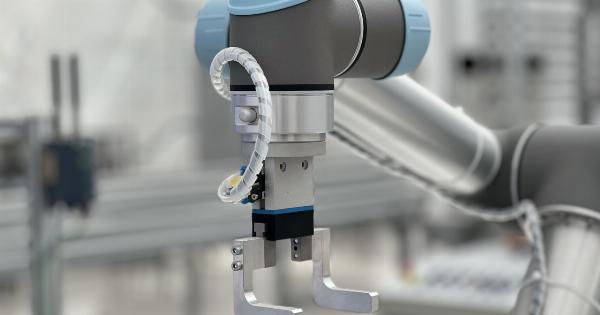Advanced AMIS Hip Replacement Surgery is a groundbreaking procedure designed to offer patients a shorter recovery time, decreased pain, and ultimately better long-term outcomes.
This surgical technique, known as the Anterior Minimally Invasive Surgery (AMIS), has gained popularity due to its many advantages over traditional hip replacement methods. In this article, we will delve into the intricacies of Advanced AMIS Hip Replacement Surgery, highlighting its benefits, procedure, recovery, and potential risks.
What is Advanced AMIS Hip Replacement Surgery?
Advanced AMIS Hip Replacement Surgery is an innovative approach that aims to replace a damaged or diseased hip joint with an artificial implant through a minimally invasive technique.
Unlike traditional hip replacement surgeries, where the incision is made at the back or side of the hip, AMIS utilizes an anterior (front) approach.
The Advantages of AMIS Hip Replacement Surgery
AMIS offers several advantages compared to conventional hip replacement surgeries:.
1. Minimally Invasive
The AMIS technique involves making a small incision at the front of the hip, allowing for less disruption to surrounding tissues, muscles, and tendons.
This minimally invasive approach results in less trauma and pain for the patient during and after the surgery.
2. Faster Recovery Time
Due to the limited tissue damage caused by the AMIS technique, patients often experience a speedier recovery compared to traditional methods.
The reduced trauma to muscles and tendons allows individuals to regain mobility and return to their daily activities more quickly.
3. Reduced Risk of Dislocation
One of the major concerns after hip replacement surgery is the risk of hip dislocation. With AMIS, the hip’s natural stability is better preserved, resulting in a decreased risk of dislocation.
This is particularly beneficial for active individuals who engage in sports or physical activities.
4. Improved Accuracy and Precision
The anterior approach provides surgeons with a clearer view of the hip joint, allowing for improved accuracy during the implantation process.
This increased precision often leads to improved alignment of the artificial joint, reducing the likelihood of future complications.
5. Reduced Muscle Damage
AMIS requires surgeons to navigate through the natural muscle planes rather than detaching and reattaching muscles. This preserves the integrity of the muscles, resulting in reduced muscle damage and potential complications.
The Procedure
The Advanced AMIS Hip Replacement Surgery procedure typically involves the following steps:.
1. Preoperative Evaluation
Prior to the surgery, the patient undergoes a thorough preoperative evaluation, which includes a physical examination, medical history review, and imaging tests such as X-rays and MRI scans.
This helps the surgeon assess the condition of the hip joint, determine the extent of the damage, and plan the procedure accordingly.
2. Anesthesia
Once in the operating room, the patient is administered either general anesthesia or regional anesthesia, depending on the surgeon’s preference and the patient’s medical condition.
The chosen anesthesia ensures that the patient remains pain-free and comfortable throughout the procedure.
3. Incision
A small incision, typically around 3-4 inches in length, is made on the front of the hip. This incision allows the surgeon access to the hip joint without the need to cut through major muscles.
4. Joint Exposure
The surgeon carefully navigates through the tissues, separating muscles and tendons to expose the hip joint. This anterior approach provides a direct view of the joint, allowing for better precision during the implantation process.
5. Implantation
The damaged or diseased hip joint is removed, and the surgeon prepares the bone to receive the artificial implant.
The artificial joint components, including the socket and the stem, are then securely anchored to the bone using special materials and techniques.
6. Closure
After confirming the stability and proper positioning of the artificial components, the surgeon carefully closes the incision using sutures or staples. Sterile dressings are applied to protect the incision site and promote healing.
Recovery and Rehabilitation
Following Advanced AMIS Hip Replacement Surgery, patients typically experience a faster recovery compared to traditional hip replacement methods.
However, it is important to follow a structured rehabilitation program to optimize the outcomes and ensure a successful recovery. The rehabilitation process may include:.
1. Postoperative Care
Immediately after the surgery, the patient is monitored in a recovery area to ensure stability and proper pain control. Pain medication may be prescribed to manage any discomfort during the initial recovery period.
2. Early Mobilization
As early as the day after surgery, patients are encouraged to begin walking with the help of crutches, a walker, or other assistive devices.
The AMIS technique often allows patients to put full weight on the operated leg soon after surgery, promoting early mobility and preventing complications associated with prolonged immobility.
3. Physical Therapy
A structured physical therapy program plays a crucial role in the rehabilitation process. Physical therapists guide patients through exercises that help strengthen the hip, improve flexibility, and restore range of motion.
The duration and intensity of the therapy depend on the individual’s progress and the surgeon’s recommendations.
4. Gradual Return to Activities
As the hip continues to heal and regain strength, patients gradually increase their activity levels under the guidance of their healthcare team.
This may include exercises, light aerobic activities, and eventually, a return to sports or other physical activities.
Potential Risks and Complications
While Advanced AMIS Hip Replacement Surgery offers numerous benefits, there are still potential risks and complications associated with the procedure. Some of these risks include:.
1. Infection
Although infection rates are low, there is a risk of developing an infection at the surgical site. Strict sterile techniques during surgery and proper wound care afterwards help minimize the risk of infection.
2. Blood Clots
Prolonged immobility after surgery can increase the risk of blood clots. To mitigate this, patients are encouraged to move around and perform exercises as recommended by their healthcare team.
Medications such as blood thinners may also be prescribed to reduce the risk of clot formation.
3. Fracture
In rare cases, fractures may occur during surgery or as a result of the implant. Surgeons take precautions to minimize this risk, but fractures can still happen.
Additional surgical procedures may be required to address fractures that occur during or after the surgery.
4. Nerve and Blood Vessel Damage
The delicate nature of the hip joint means there is a slight risk of damage to surrounding nerves and blood vessels during the procedure.
Skilled surgeons take great care to avoid these complications, and any instances of nerve or blood vessel damage are infrequent.

























